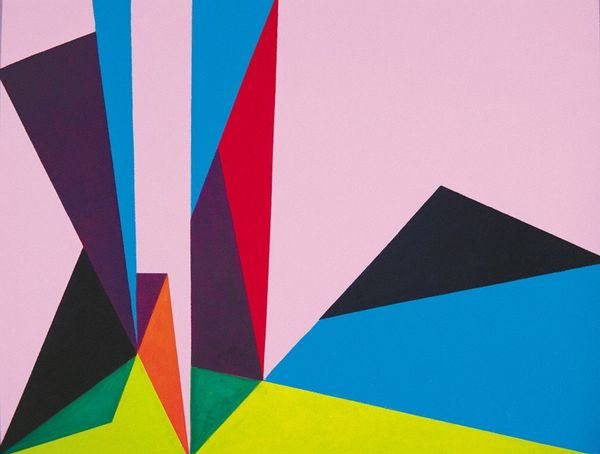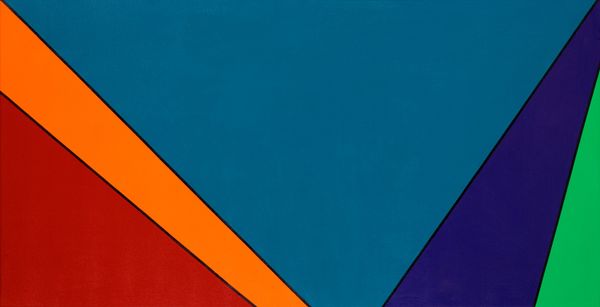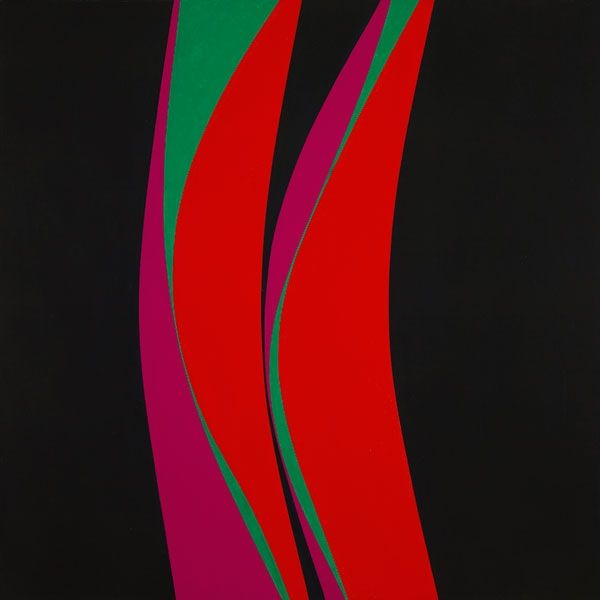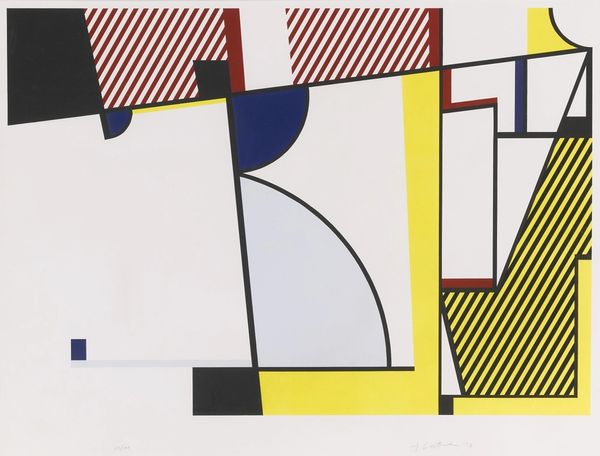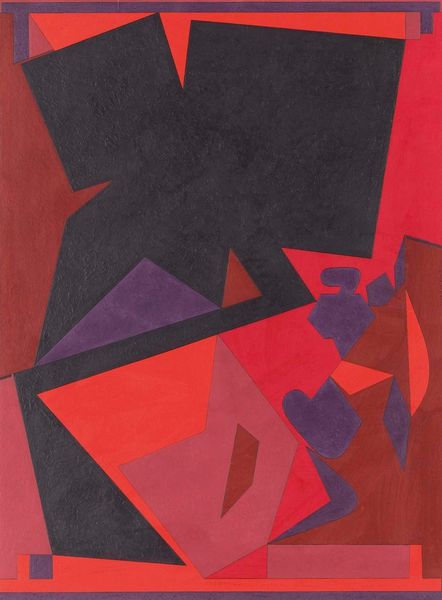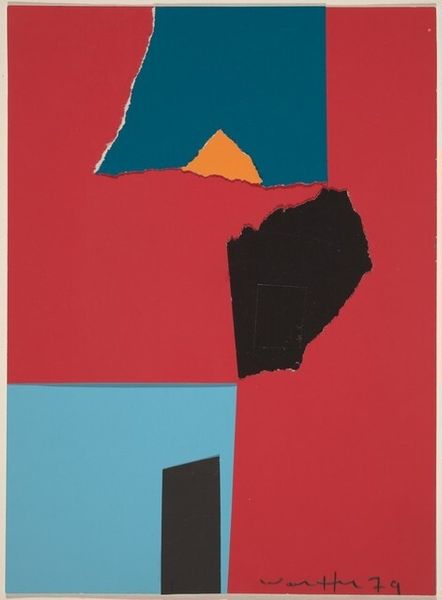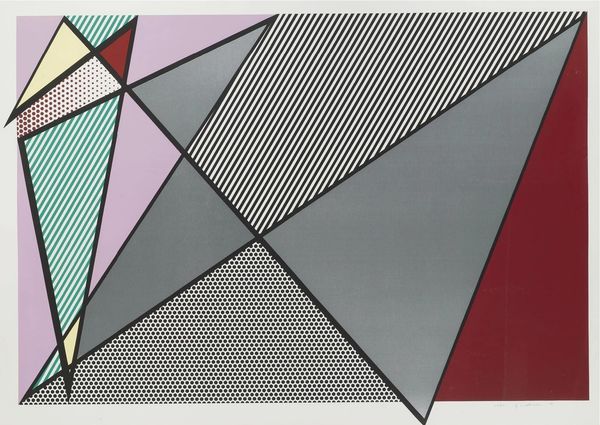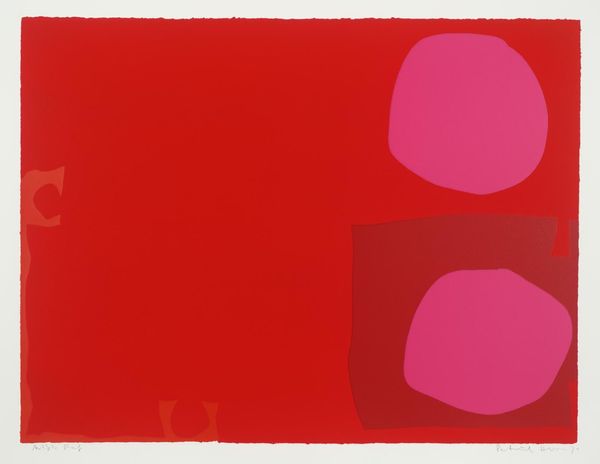
acrylic-paint
#
abstract-expressionism
#
abstract expressionism
#
pop art
#
acrylic-paint
#
form
#
geometric-abstraction
#
abstraction
#
line
#
abstract art
#
hard-edge-painting
Copyright: Lorser Feitelson,Fair Use
Editor: Here we have Lorser Feitelson's "Magical Space Forms (Black, Fuchsia)" from 1951, rendered in acrylic paint. The hard-edged geometric shapes are striking, almost playful against the stark black backdrop. How would you interpret this piece? Curator: For me, this painting screams postwar industrial optimism. Look at the flawless application of the acrylic paint— a relatively new material at the time, a symbol of technological advancement. Consider its use. This precise, manufactured color flattens the picture plane and moves us away from the expressive brushstrokes we expect with painting from this era. How do those pristine edges speak to you? Editor: They seem to contradict the “magical” in the title, maybe even hinting at a sense of manufactured fantasy? Curator: Precisely! Feitelson, through his embrace of novel industrial materials, critiques the boundaries between “high art” and commercial design. Isn’t the palette itself reminiscent of advertising aesthetics from the period? It is not simply ‘abstraction’ but an abstraction rooted in a material reality. Where was this exhibited and how was it viewed? Editor: That's interesting. I hadn't thought about the materials as making such a statement, rather than simply being materials. Finding information on the shows the artwork was in will definitely give us some additional cultural context. Thanks! Curator: Think of the labor involved in producing these perfect lines. What does mass production do for labor relations at this moment in the West? What type of life and experiences are now marketable to Feitelson's viewers? Editor: Absolutely. Looking at the artistic choices through a material lens gives "Magical Space Forms" so much more depth. Now, I see commentary in the crisp lines and vibrant, synthetic colors.
Comments
No comments
Be the first to comment and join the conversation on the ultimate creative platform.
